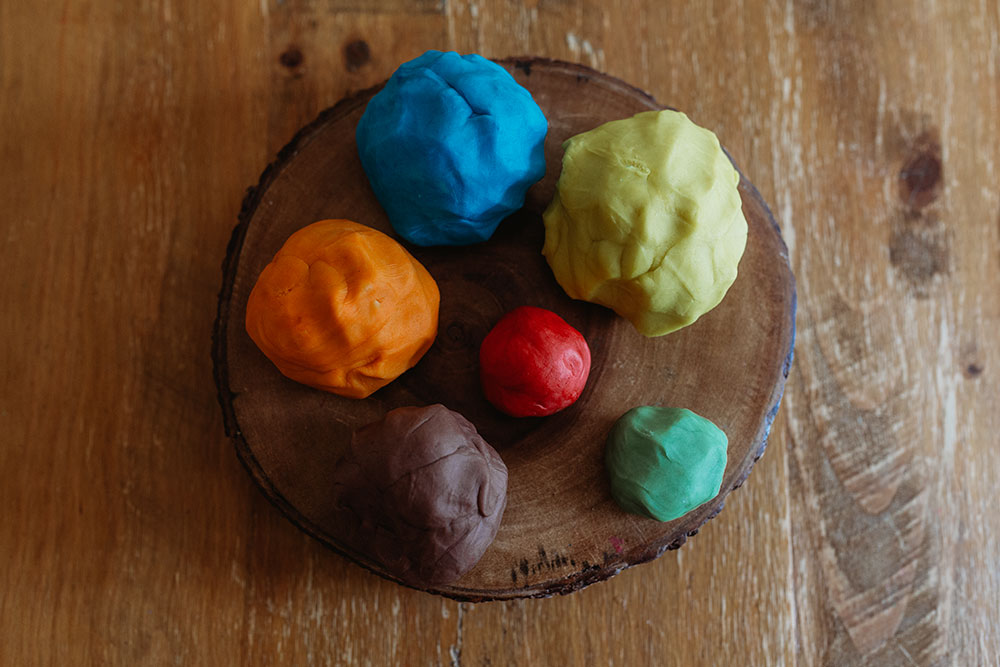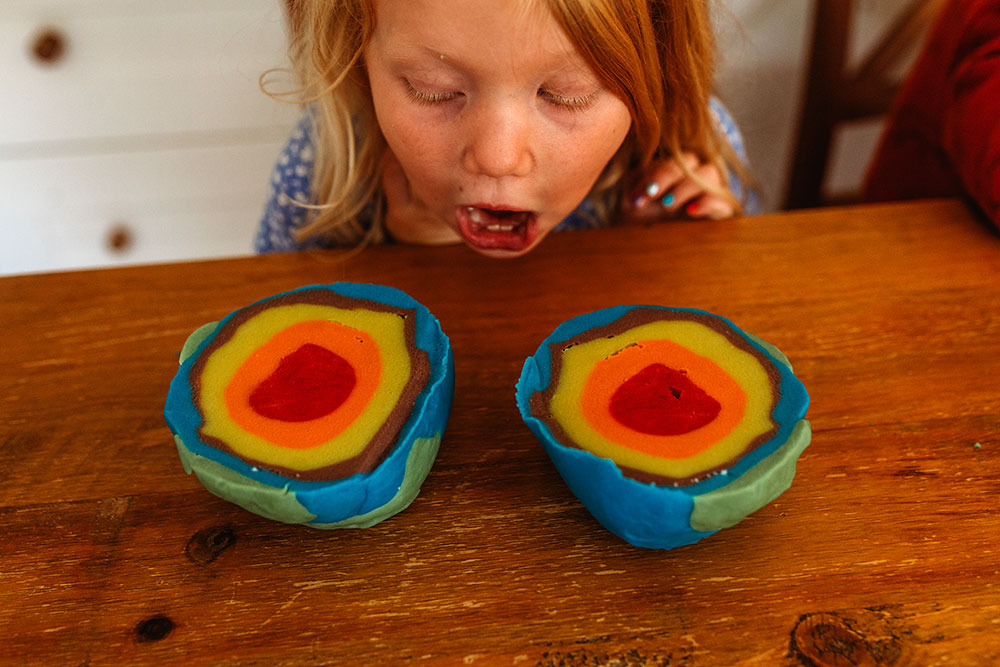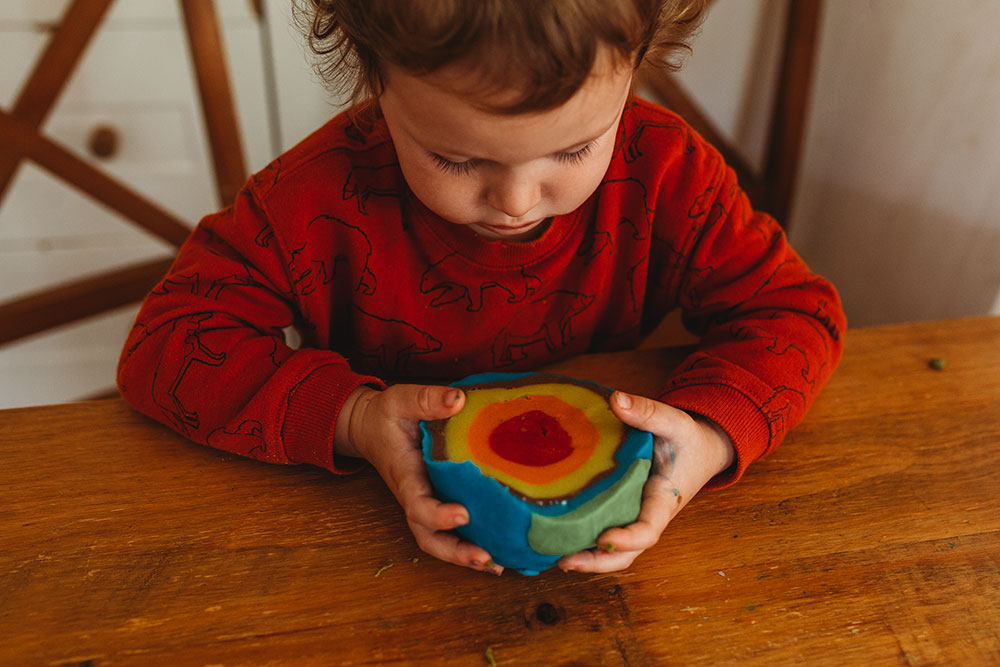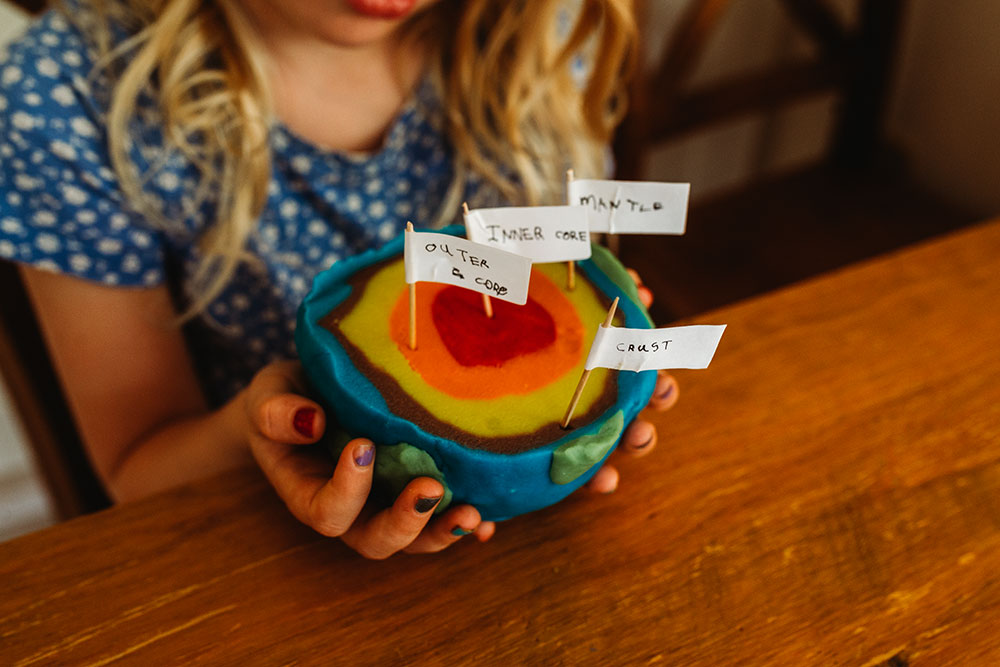Layers of the Earth Model
This is such a fun little project to do if you are learning about the different layers of the Earth and once you have finished it you can have fun playing with the homemade playdough!
What you'll need
- 3 cups of flour
- 1/2 cup of salt
- 6 tablespoons cream of tartar
- 3 tablespoons of vegetable oil
- 3 cups of water
Instructions:
- Mix all the ingredients together in a pot until all the lumps are gone and then move to the stove and cook over low heat, stirring often. The dough will thicken in a few minutes.
- once the dough begins to pull away from the sides but still a bit sticky turn off the heat and allow it to cool inside the pot.
- Once cool, the stickiness will disappear and the dough can be kneaded and dyed
- Divide your dough into 6 parts: 2 small (golf ball sized), 2 medium and 2 large balls. Add food colouring to each ball. The 2 small balls need to be red and green, the medium balls orange & brown and the large balls yellow and blue.

Creating the Layers of the Earth
- Now comes the fun part! Begin by rolling the red dough into a ball, this is the Earth's solid inner core.
- Next, it's time to create the liquid outer core (the part that spins creating Earth's magnetic field) by taking the medium sized orange ball and flattening it and covering the red ball in it. You will have extra dough that needs to be cut off.
- Next, take the yellow ball which will be the mantle (and is the thickest part of our earth and is made of very hot rocks) and flatten it and cover the orange ball.
- Then flatten the medium brown ball and cover the yellow ball. This layer represents the Earth's crust made up of rocks.
- Next take the blue ball (the oceans) and flatten it and cover the brown ball
- Finally add the continents using the small green ball of dough.

Revealing the Layers
Now comes the exciting part when we can reveal the layers. Both the kids absolutely loved this part! All you need to do is carefully cut it in half and you can see your Layers of the Earth Model come to life. Next you can add labels to each section.




